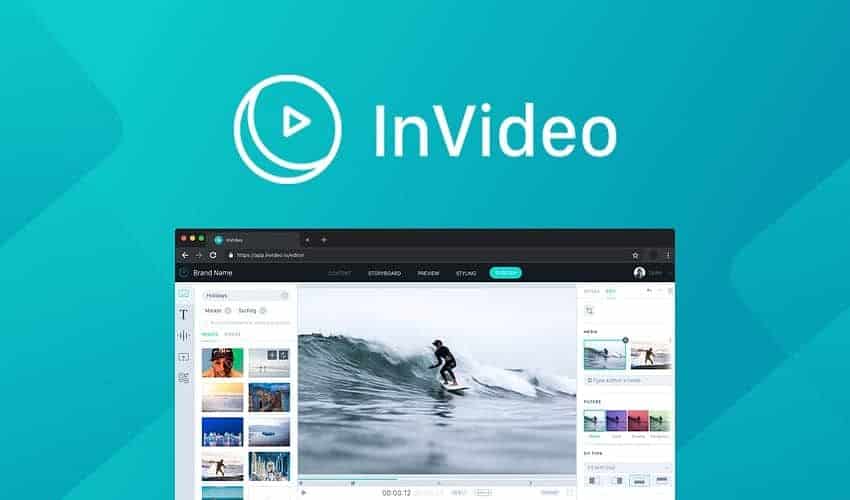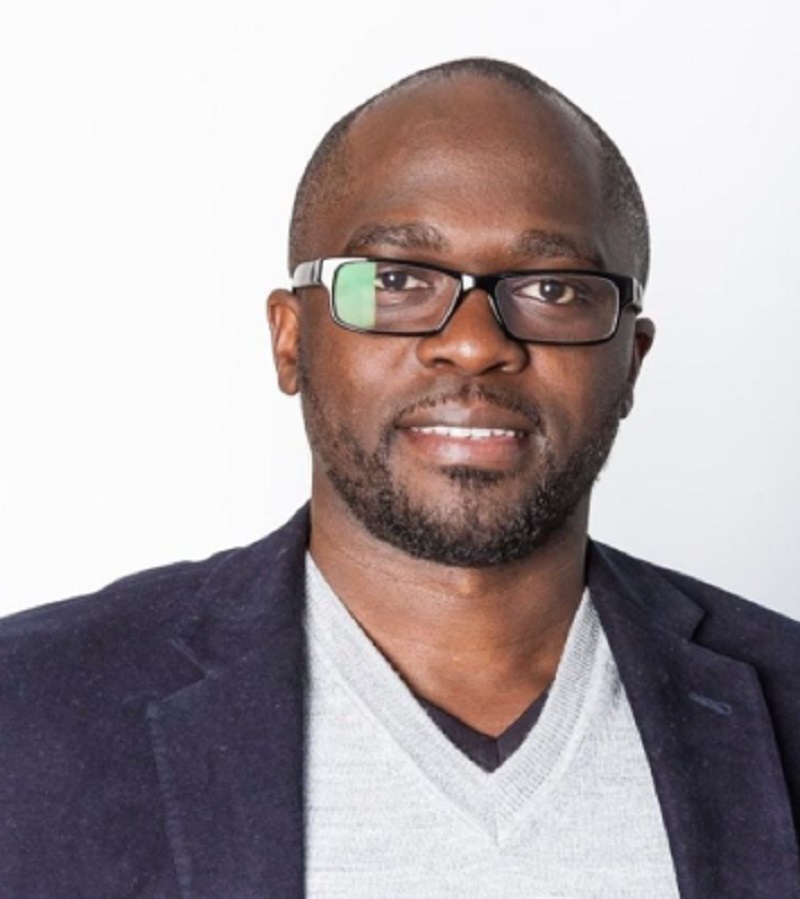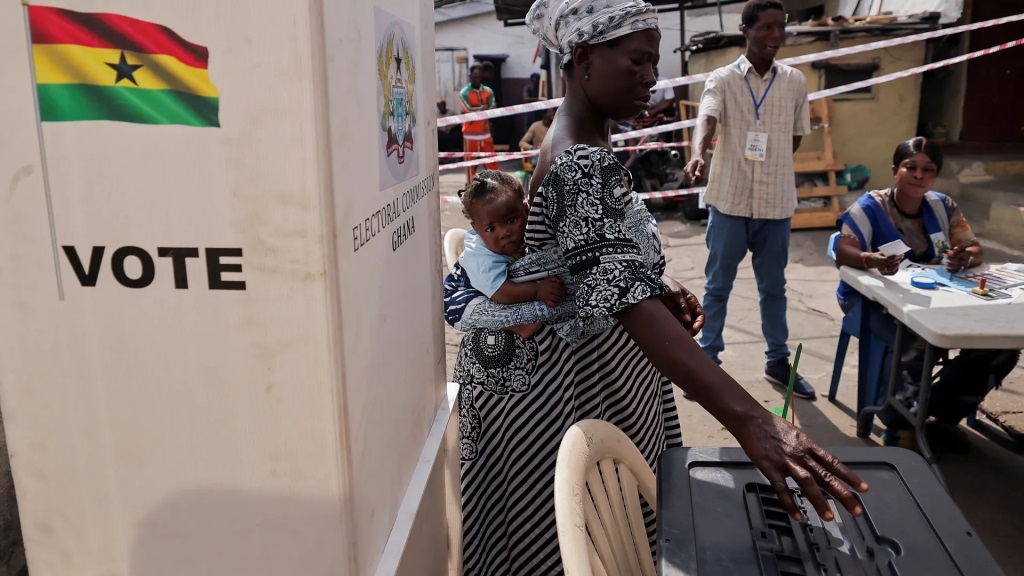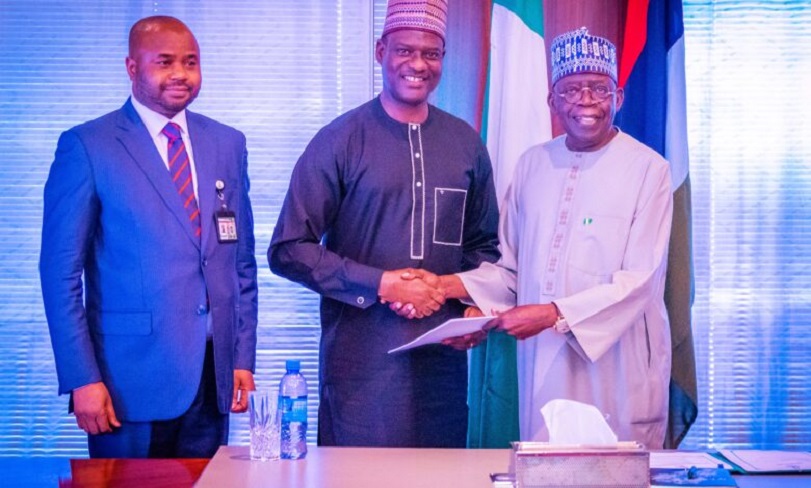Feature/OPED
Video Editing Tools That Can Ease the Work of Digital Journalists and How

Digital journalism, be it a one-man-army or a small firm, both required compelling content to compete with mainstream media companies.
The ethics of media journalism and the credibility of the information source are essential factors. But the physical and visual presentation of each piece draws more attention than any other parameter.
It is important to be original and it implies journalism too. They need to master copywriting too, so that it can be leveraged over others, know more about copywriting and its importance by clicking this link here.
In this world of technology and fast-paced information — videos are the only outlets that can deliver the best-in-class results.
Need For Video
Videos find utility by the digital journalist in two ways. The first is in the form of direct content pieces. Which means your video content is the primary source of information. This video is not accompanied by any written reports or supporting articles.
Many users on the internet depend on the video format of content; this type of journalism could fetch you more eyeballs and a higher reach.
The other form of video integration is snippets or trailers within written pieces. As a digital journalist who focuses on the written article format, integrating small snippets of videos will enhance its quality.
This practice will also increase the searchability score of your page. Therefore your news article reaches a broader user based on the internet.
Some journalists also use video for cross-promotions. These are marketing or promotional content created based on the information shared on the primary website. These videos are also shared on social media platforms, email newsletters, etc.
Faster Way To Make Videos
As videos’ consumption is effortless in today’s mobile-driven world, having video content creation has become a prerequisite for all digital journalists.
We often think of video making as complicated as making a film. You imagine large computers and cameras. But the phone and the laptop are the only tools you need. The internet itself feeds you with tools to make internet-content.
Using online video editing tools is one of the best ways to create fast and accurate video content. These tools do not require a software download, professional skills, or an annual membership.
They are simple web-based applications that anybody with a computer or mobile phone can access.
These applications are designed in a way to cater to the lowest common denominator. This means if you have close to zero knowledge of video making, editing, or scripting — these platforms will help you transform your text-based articles into shareable video formats.
The Best Editing Tools For Journalists
Now that you understand the need for video and its application in digital journalism. Here are five platforms that will make your task easier.
InVideo
InVideo is the go-to choice for most online content creators. This sophisticated video creation platform allows you to make text-based or elaborate story-based videos with just a few clicks.
The highlight of Invideo is the presence of more than 3,000 templates. These templates are tailor-made to fit each need and niche. They can be customized to suit the video creator’s needs and exported directly to social media or downloaded on the computer for external use.
The platform also provides pre-designed video templates for various platforms such as YouTube, Instagram, and Facebook. The service is entirely free for anyone to use, and a premium membership will give you access to over one-million free stock footage videos and photos.
The themes and templates of InVideo revolve around current affairs, upcoming events, and festivals. This reduces the time and effort to design each video from scratch. InVideo already understands the journalist’s need.
Youtube Editor
We all think of YouTube as a video platform, but their content development window is just as useful. The YouTube creator page is a great starting point for anyone who has lesser experience with online video generation.
The YouTube platform video editor is a fundamental and straightforward tool. It does not demand any complex actions or over-the-top animations and effects. If you aim to create crisp and uncomplicated video content for posting on YouTube, this tool is a fabulous step-one.
Video Shop
VideoShop is a long-running and simple to use video editing application. It has effortless features like trimming video, integrating music, adding text, and altering the length. Many journalists use these tools to allow easy subtitling for foreign languages or hard-to-listen-audio.
Video shops also have a layering feature that lets you integrate more than one clip at a time. This tool is also available in the form of an app on IOS and Android.
Square Fit
SquareFit is not a per-say video editing tool. It is a tool that enhances video content sizes. Social media platforms like Instagram and Facebook demand videos to be in a specific resolution. SquareFit helps you optimize any video to accommodate social media norms.
They also allow you to add simple text, add filters (like on Instagram), rotate, flip video, or scale video to the needed size.
SquareFit is a mobile application that saves the video to your phone memory. The user can later upload this video on their desired platform.
InShot
Inshot is one such app that allows very detailed video edits that you might rarely use as a journalist. But very helpful at the time of a specific need. They have advanced features like freeze frame, background alteration, text animation, adaptability to change in resolution, and much more.
This application has often been referred to as user-friendly since it’s a mobile application that is self-explanatory. The digital journalist often rely on this app for its sincere user interface
Final Thoughts,
There is no denying that the need for video has it at an all-time high. Even industry leaders like Instagram and Facebook have recognized this need and created video-specific sections on their platform. (Called IG-TV and Facebook Watch, respectively)
Making videos will soon become as easy as clicking a photo on your phone. And most technological and media changes usually start from the field with journalists.
As a journalist, you face situations where adaptability is the need of the hour. This video transformation is one such change. However, these online editing tools help them get the work done faster.
Gives them time to focus on their primary job – reporting.
Feature/OPED
The Future of Payments: Key Trends to Watch in 2025

By Luke Kyohere
The global payments landscape is undergoing a rapid transformation. New technologies coupled with the rising demand for seamless, secure, and efficient transactions has spurred on an exciting new era of innovation and growth. With 2025 fast approaching, here are important trends that will shape the future of payments:
1. The rise of real-time payments
Until recently, real-time payments have been used in Africa for cross-border mobile money payments, but less so for traditional payments. We are seeing companies like Mastercard investing in this area, as well as central banks in Africa putting focus on this.
2. Cashless payments will increase
In 2025, we will see the continued acceleration of cashless payments across Africa. B2B payments in particular will also increase. Digital payments began between individuals but are now becoming commonplace for larger corporate transactions.
3. Digital currency will hit mainstream
In the cryptocurrency space, we will see an increase in the use of stablecoins like United States Digital Currency (USDC) and Tether (USDT) which are linked to US dollars. These will come to replace traditional cryptocurrencies as their price point is more stable. This year, many countries will begin preparing for Central Bank Digital Currencies (CBDCs), government-backed digital currencies which use blockchain.
The increased uptake of digital currencies reflects the maturity of distributed ledger technology and improved API availability.
4. Increased government oversight
As adoption of digital currencies will increase, governments will also put more focus into monitoring these flows. In particular, this will centre on companies and banks rather than individuals. The goal of this will be to control and occasionally curb runaway foreign exchange (FX) rates.
5. Business leaders buy into AI technology
In 2025, we will see many business leaders buying into AI through respected providers relying on well-researched platforms and huge data sets. Most companies don’t have the budget to invest in their own research and development in AI, so many are now opting to ‘buy’ into the technology rather than ‘build’ it themselves. Moreover, many businesses are concerned about the risks associated with data ownership and accuracy so buying software is another way to avoid this risk.
6. Continued AI Adoption in Payments
In payments, the proliferation of AI will continue to improve user experience and increase security. To detect fraud, AI is used to track patterns and payment flows in real-time. If unusual activity is detected, the technology can be used to flag or even block payments which may be fraudulent.
When it comes to user experience, we will also see AI being used to improve the interface design of payment platforms. The technology will also increasingly be used for translation for international payment platforms.
7. Rise of Super Apps
To get more from their platforms, mobile network operators are building comprehensive service platforms, integrating multiple payment experiences into a single app. This reflects the shift of many users moving from text-based services to mobile apps. Rather than offering a single service, super apps are packing many other services into a single app. For example, apps which may have previously been used primarily for lending, now have options for saving and paying bills.
8. Business strategy shift
Recent major technological changes will force business leaders to focus on much shorter prediction and reaction cycles. Because the rate of change has been unprecedented in the past year, this will force decision-makers to adapt quickly, be decisive and nimble.
As the payments space evolves, businesses, banks, and governments must continually embrace innovation, collaboration, and prioritise customer needs. These efforts build a more inclusive, secure, and efficient payment system that supports local to global economic growth – enabling true financial inclusion across borders.
Luke Kyohere is the Group Chief Product and Innovation Officer at Onafriq
Feature/OPED
Ghana’s Democratic Triumph: A Call to Action for Nigeria’s 2027 Elections

In a heartfelt statement released today, the Conference of Nigeria Political Parties (CNPP) has extended its warmest congratulations to Ghana’s President-Elect, emphasizing the importance of learning from Ghana’s recent electoral success as Nigeria gears up for its 2027 general elections.
In a statement signed by its Deputy National Publicity Secretary, Comrade James Ezema, the CNPP highlighted the need for Nigeria to reclaim its status as a leader in democratic governance in Africa.
“The recent victory of Ghana’s President-Elect is a testament to the maturity and resilience of Ghana’s democracy,” the CNPP stated. “As we celebrate this achievement, we must reflect on the lessons that Nigeria can learn from our West African neighbour.”
The CNPP’s message underscored the significance of free, fair, and credible elections, a standard that Ghana has set and one that Nigeria has previously achieved under former President Goodluck Jonathan in 2015. “It is high time for Nigeria to reclaim its position as a beacon of democracy in Africa,” the CNPP asserted, calling for a renewed commitment to the electoral process.
Central to CNPP’s message is the insistence that “the will of the people must be supreme in Nigeria’s electoral processes.” The umbrella body of all registered political parties and political associations in Nigeria CNPP emphasized the necessity of an electoral system that genuinely reflects the wishes of the Nigerian populace. “We must strive to create an environment where elections are free from manipulation, violence, and intimidation,” the CNPP urged, calling on the Independent National Electoral Commission (INEC) to take decisive action to ensure the integrity of the electoral process.
The CNPP also expressed concern over premature declarations regarding the 2027 elections, stating, “It is disheartening to note that some individuals are already announcing that there is no vacancy in Aso Rock in 2027. This kind of statement not only undermines the democratic principles that our nation holds dear but also distracts from the pressing need for the current administration to earn the trust of the electorate.”
The CNPP viewed the upcoming elections as a pivotal moment for Nigeria. “The 2027 general elections present a unique opportunity for Nigeria to reclaim its position as a leader in democratic governance in Africa,” it remarked. The body called on all stakeholders — including the executive, legislature, judiciary, the Independent National Electoral Commission (INEC), and civil society organisations — to collaborate in ensuring that elections are transparent, credible, and reflective of the will of the Nigerian people.
As the most populous African country prepares for the 2027 elections, the CNPP urged all Nigerians to remain vigilant and committed to democratic principles. “We must work together to ensure that our elections are free from violence, intimidation, and manipulation,” the statement stated, reaffirming the CNPP’s commitment to promoting a peaceful and credible electoral process.
In conclusion, the CNPP congratulated the President-Elect of Ghana and the Ghanaian people on their remarkable achievements.
“We look forward to learning from their experience and working together to strengthen democracy in our region,” the CNPP concluded.
Feature/OPED
The Need to Promote Equality, Equity and Fairness in Nigeria’s Proposed Tax Reforms

By Kenechukwu Aguolu
The proposed tax reform, involving four tax bills introduced by the Federal Government, has received significant criticism. Notably, it was rejected by the Governors’ Forum but was still forwarded to the National Assembly. Unlike the various bold economic decisions made by this government, concessions will likely need to be made on these tax reforms, which involve legislative amendments and therefore cannot be imposed by the executive. This article highlights the purposes of taxation, the qualities of a good tax system, and some of the implications of the proposed tax reforms.
One of the major purposes of taxation is to generate revenue for the government to finance its activities. A good tax system should raise sufficient revenue for the government to fund its operations, and support economic and infrastructural development. For any country to achieve meaningful progress, its tax-to-GDP ratio should be at least 15%. Currently, Nigeria’s tax-to-GDP ratio is less than 11%. The proposed tax reforms aim to increase this ratio to 18% within the next three years.
A good tax system should also promote income redistribution and equality by implementing progressive tax policies. In line with this, the proposed tax reforms favour low-income earners. For example, individuals earning less than one million naira annually are exempted from personal income tax. Additionally, essential goods and services such as food, accommodation, and transportation, which constitute a significant portion of household consumption for low- and middle-income groups, are to be exempted from VAT.
In addition to equality, a good tax system should ensure equity and fairness, a key area of contention surrounding the proposed reforms. If implemented, the amendments to the Value Added Tax could lead to a significant reduction in the federal allocation for some states; impairing their ability to finance government operations and development projects. The VAT amendments should be holistically revisited to promote fairness and national unity.
The establishment of a single agency to collect government taxes, the Nigeria Revenue Service, could reduce loopholes that have previously resulted in revenue losses, provided proper controls are put in place. It is logically easier to monitor revenue collection by one agency than by multiple agencies. However, this is not a magical solution. With automation, revenue collection can be seamless whether it is managed by one agency or several, as long as monitoring and accountability measures are implemented effectively.
The proposed tax reforms by the Federal Government are well-intentioned. However, all concerns raised by Nigerians should be looked into, and concessions should be made where necessary. Policies are more effective when they are adapted to suit the unique characteristics of a nation, rather than adopted wholesale. A good tax system should aim to raise sufficient revenue, ensure equitable income distribution, and promote equality, equity, and fairness.
-

 Feature/OPED5 years ago
Feature/OPED5 years agoDavos was Different this year
-
Travel/Tourism8 years ago
Lagos Seals Western Lodge Hotel In Ikorodu
-

 Showbiz2 years ago
Showbiz2 years agoEstranged Lover Releases Videos of Empress Njamah Bathing
-

 Banking6 years ago
Banking6 years agoSort Codes of GTBank Branches in Nigeria
-

 Economy2 years ago
Economy2 years agoSubsidy Removal: CNG at N130 Per Litre Cheaper Than Petrol—IPMAN
-

 Banking2 years ago
Banking2 years agoFirst Bank Announces Planned Downtime
-

 Sports2 years ago
Sports2 years agoHighest Paid Nigerian Footballer – How Much Do Nigerian Footballers Earn
-

 Technology4 years ago
Technology4 years agoHow To Link Your MTN, Airtel, Glo, 9mobile Lines to NIN











